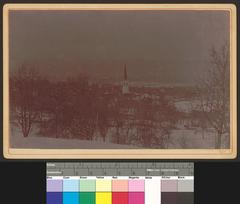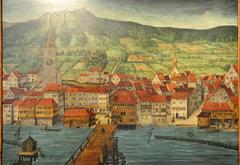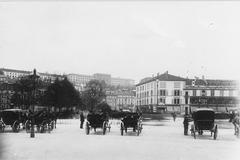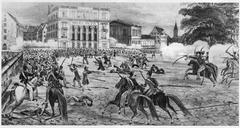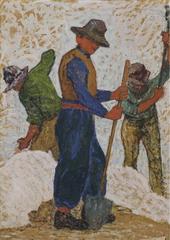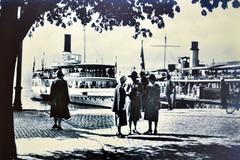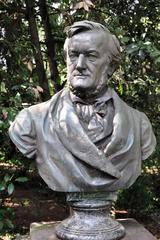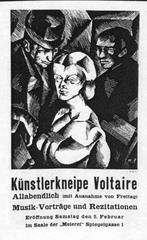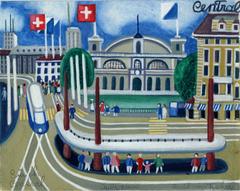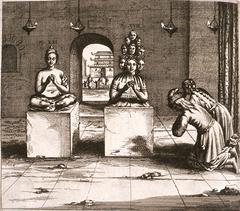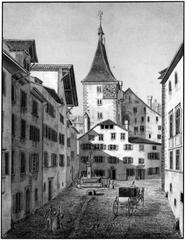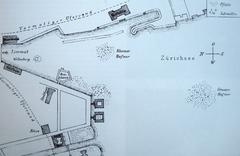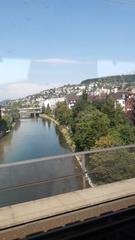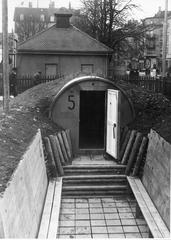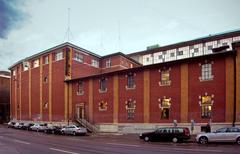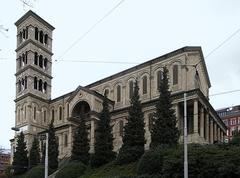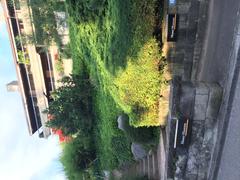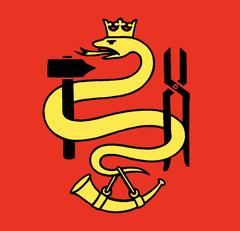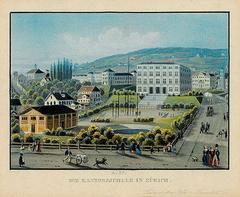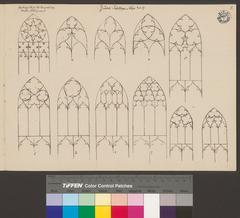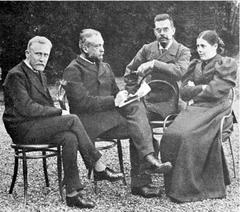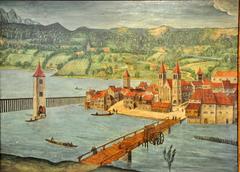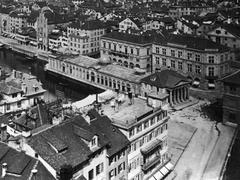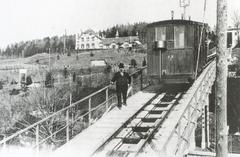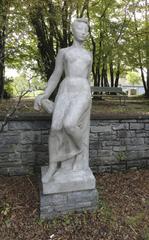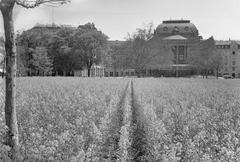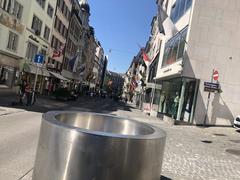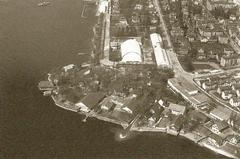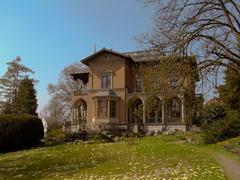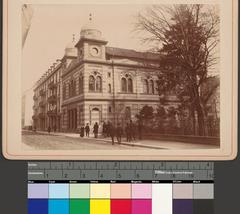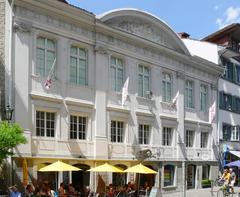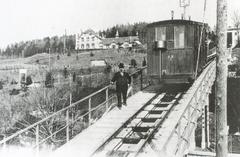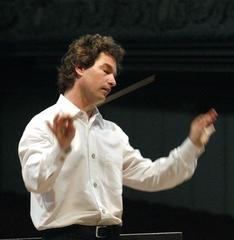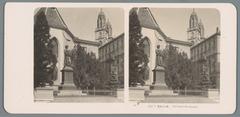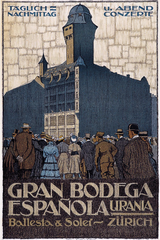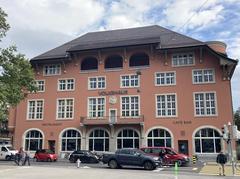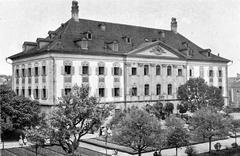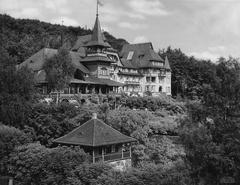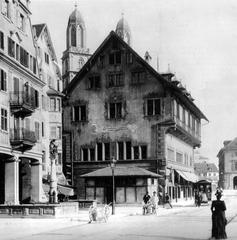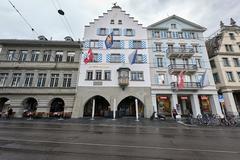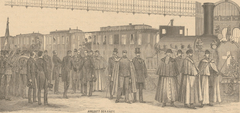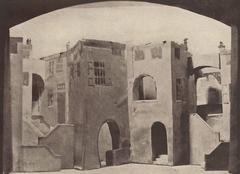Visiting the Grave of Henry Dunant in Zürich: Comprehensive Guide, History, and Visitor Tips
Date: 14/06/2025
Introduction
Henry Dunant’s grave in Zürich stands as a profound testament to the enduring legacy of a man whose humanitarian vision transformed global history. As the founder of the International Committee of the Red Cross and the first Nobel Peace Prize laureate, Dunant’s life and work resonate with those interested in humanitarianism, international law, and Swiss heritage. His grave, located within the tranquil and historically significant Sihlfeld Cemetery, offers a place for reflection and insight into Switzerland’s role as a center for humanitarian ideals. This guide provides practical information on visiting hours, ticketing (free access), accessibility, and tips for making your visit meaningful, as well as historical and cultural context to enrich your experience (Stadt Zürich; Swiss National Museum; Newly Swissed).
Contents
- Introduction
- Historical Context of Henry Dunant’s Grave
- Symbolic and Humanitarian Significance
- Cultural and Educational Importance
- Visiting Henry Dunant’s Grave: Practical Information
- Guided Tours and Cultural Events
- Visitor Experience: Etiquette and Amenities
- Frequently Asked Questions (FAQ)
- Summary and Final Visitor Recommendations
- Sources and External Links
Historical Context of Henry Dunant’s Grave
Henry Dunant (1828–1910) is celebrated as the founder of the International Committee of the Red Cross and the first recipient of the Nobel Peace Prize in 1901 (Swiss National Museum). His humanitarian vision was ignited after witnessing the suffering at the Battle of Solferino in 1859, leading to his pivotal work A Memory of Solferino and the birth of the Red Cross Movement (Springer). Despite later years spent in obscurity, his legacy was ultimately recognized internationally.
Dunant died in Heiden, Switzerland, and requested to be buried without ceremony. His grave in Zürich’s Sihlfeld Cemetery symbolizes not only personal humility but also the turbulent circumstances of his final years (hist2809goestothemuseum.wordpress.com).
Symbolic and Humanitarian Significance
Memorializing a Global Humanitarian Legacy
Dunant’s grave is a powerful symbol for humanitarian ideals. It commemorates the creation of the Red Cross and the Geneva Conventions, which continue to shape international humanitarian law and practices (PWOnlyIAS). The site serves as a tribute to millions of Red Cross and Red Crescent volunteers worldwide.
A Site of Pilgrimage and Reflection
The grave attracts humanitarian workers, scholars, and tourists, serving as a place for reflection and inspiration. It is recognized as a pilgrimage site for those connected to the Red Cross’s mission or interested in humanitarian history (hist2809goestothemuseum.wordpress.com).
Artistic and Monumental Features
The grave is marked by a simple headstone, reflecting Dunant’s humility, and is often adorned with flowers and pebbles, a sign of respect and memory. Sculptural elements at the site visually narrate the ethos of humanitarian aid (Newly Swissed).
Commemoration Beyond the Individual
Dunant’s grave also stands as a collective memorial to all Red Cross volunteers who have risked their lives in humanitarian service (hist2809goestothemuseum.wordpress.com).
Cultural and Educational Importance
A Living Reminder of Humanitarian Principles
The Red Cross and Red Crescent Movement, inspired by Dunant, is the world’s largest humanitarian network, with 192 national societies and millions of volunteers (Vachue.com). World Red Cross Day (May 8th, Dunant’s birthday) is commemorated at his grave, reinforcing the ongoing importance of humanitarian values.
Educational Value
The grave provides a tangible link to the origins of modern humanitarianism, making it an essential stop for students, researchers, and anyone invested in peace studies or international affairs (Swiss National Museum).
Visiting Henry Dunant’s Grave: Practical Information
Location and Access
- Address: Sihlfeld Cemetery, Aemtlerstrasse 149, 8003 Zürich, Switzerland (zuerich.com)
- Section: The grave is located in Section D, a short walk from the main entrance.
- Public Transport: Tram lines 2 and 3 (Zypressenstrasse stop), Bus 72 (Friedhof Sihlfeld stop). From Zürich Main Station, it’s 10–15 minutes by public transport.
- By Car: Limited parking available; public transport is recommended.
- On Foot/Bike: Easily accessible from central Zürich.
Visiting Hours and Admission
- Cemetery Grounds: Open daily, 24 hours; no admission fee (zuerich.com).
- Friedhof Forum Museum: Check official website for specific opening times.
Accessibility
- Wheelchair Access: Main paths are paved or gravel and largely barrier-free; accessible restrooms in Sections A, E, and D.
- Visual Impairments: Section D offers audio descriptions and a navigation app (Stadt Zürich).
Facilities and Amenities
- Restrooms and benches available throughout the cemetery.
- Maps and signage help locate the grave; printed maps may be available at the entrance.
- Photography for personal use is permitted; maintain respectful conduct (zuercher-museen.ch).
Guided Tours and Cultural Events
- Guided Tours: The cemetery offers themed walks, such as the “RIP – Rest in Peace” tour, which includes Dunant’s grave and the old crematorium (Zürich Tour). Tours are generally in German, with advance booking required.
- Friedhof Forum: Hosts concerts, exhibitions, and educational programs about life, death, and remembrance (zuercher-museen.ch).
Visitor Experience: Etiquette and Amenities
- Conduct: Maintain silence and respect; avoid disruptive activities, especially during funerals.
- Traditions: Visitors often leave flowers or pebbles at the grave as a sign of remembrance.
- Amenities: Wheelchair-accessible restrooms, benches, and nearby cafés (e.g., Kafi Dihei, Restaurant Stoller) are available for refreshments (Newly Swissed).
Frequently Asked Questions (FAQ)
Q: Is there an entrance fee to visit Henry Dunant’s grave?
A: No, entry is free.
Q: What are the visiting hours?
A: The cemetery is open 24/7.
Q: Are guided tours available?
A: Yes, guided tours are offered; check the Friedhof Forum for scheduling.
Q: Is the cemetery wheelchair accessible?
A: Yes, main paths and restrooms are accessible.
Q: Can I take photographs?
A: Yes, for personal use and with discretion.
Q: How do I find Henry Dunant’s grave?
A: Located in Section D, near the main entrance; maps are available at the entrance.
Summary and Final Visitor Recommendations
Visiting Henry Dunant’s grave at Sihlfeld Cemetery offers a journey into the heart of modern humanitarianism and a chance to reflect on the impact of one individual’s compassion. The grave, set in Zürich’s largest and most historic cemetery, honors both Dunant and the countless volunteers who further his legacy. With free, flexible visiting hours, accessible facilities, and enriching cultural programming, the site welcomes all who wish to learn, reflect, and pay their respects. To maximize your visit, consider joining a guided tour, visiting nearby historical attractions, and using digital resources such as interactive maps or the Audiala app for audio guides. Dunant’s grave is more than a historical site—it is a living reminder of the collective responsibility to uphold humanitarian values in today’s world (zuerich.com; Vachue.com; hist2809goestothemuseum.wordpress.com).
Sources and External Links
- Stadt Zürich: Friedhof Sihlfeld
- Swiss National Museum: Henry Dunant – A Tragic Hero
- Newly Swissed: Cemeteries in Zurich
- hist2809goestothemuseum.wordpress.com: Abigail Lessard
- Vachue.com: World Red Cross Day 2025 – Theme, History, Key Facts and Principles of Red Cross
- zuerich.com: Sihlfeld Cemetery
- zuercher-museen.ch: Friedhof Forum Museum
